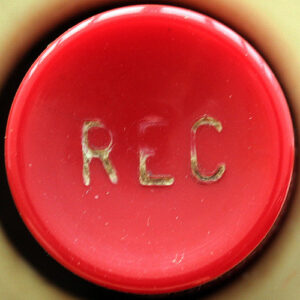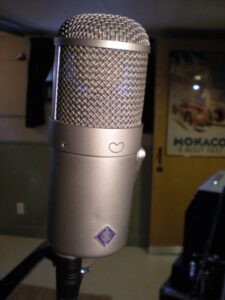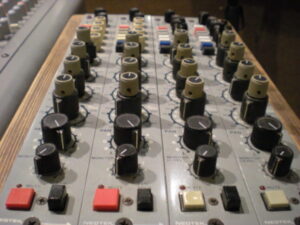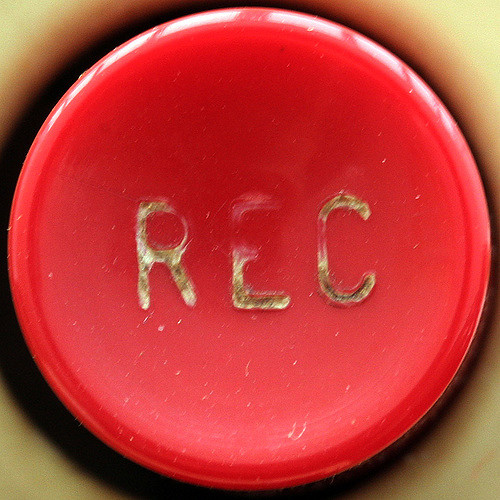Recording Better Vocal Takes
© Mike Konopka
 Recording quality vocal performances is perhaps the most important aspect in the success of your music projects. Here’s several tips to help you capture great vocals:
Recording quality vocal performances is perhaps the most important aspect in the success of your music projects. Here’s several tips to help you capture great vocals:
Before recording gain the vocalist’s trust and respect: As an audio pro, or even just the person in charge of recording, it’s your job to show the singer you really care about the quality of their performance. Little things like adjusting the studio lighting, setting the vibe, and making sure they have something soothing to drink go a long way in calming a singer’s jumpy nerves.
Also, seat all people in the control room to prevent the singer from feeling judged. Over the years I have found that only one person should communicate with talent. Several well meaning folks standing and shouting conflicting instructions simultaneously is a sure way to ruin the vibe the singer needs to perform a great take.
Recording Better Vocal Takes
 Choose the right mic for the vocalist: Try a few different mics to see what works best for the singer’s voice. Don’t assume the the mic needs to be a typical studio condenser. Check out various dynamic and ribbon mics too. You can set up several mics and see what’s working for your vocalist. Once you’ve got the right mic make sure it’s adjusted with proper pattern, roll-off, pad, & positioning. I like the vocal mic just above the singer’s mouth angled down toward the throat/chest area. Use a pop filter to manage plosives too.
Choose the right mic for the vocalist: Try a few different mics to see what works best for the singer’s voice. Don’t assume the the mic needs to be a typical studio condenser. Check out various dynamic and ribbon mics too. You can set up several mics and see what’s working for your vocalist. Once you’ve got the right mic make sure it’s adjusted with proper pattern, roll-off, pad, & positioning. I like the vocal mic just above the singer’s mouth angled down toward the throat/chest area. Use a pop filter to manage plosives too.
One of the interesting things I learned from my work with The Kinks’ Ray Davies, and other well-known singers was this: Once a singer has attained iconic status, it doesn’t really matter which mic you use!
That’s because people instantly recognize their vocal identity. And so, the exact mic used means much less than trying to establish an identity for an up and coming singer. Now I’m certainly not advocating using lousy mics with superstars. Far from it! I’ve just learned from experience that the quality of the take is the most important aspect of a great vocal performance. A lowly Shure SM-58 matched with a killer vocal delivery surpasses a pricey Neumann paired to an average vocal effort. Every time!
Recording Better Vocal Takes
Choose the right headphones or monitoring setup: Many singers sing pitchy with sealed headphones. And some vocalists like their brains turned to mush with sheer headphone level. Loud cans preclude using open-air style headphones which will leak or even feedback into the vocal mic.
Most pro singers wear one ear cushion slightly “off” to aid in hearing their natural pitch. The Beatles sometimes favored out of phase speakers hung on each side of their ears instead of headphones. That way they could blend together in the room and still minimize “spill”. Experiment with headphones and monitoring options to help capture the best performances.
More info about tracking vocals without headphones
 Always record first passes and try for complete first vocal takes: The enemy of the creative process is self-judgement. Pushing a singer to analyze their early vocal performances on a line-by-line basis is actually counter productive. Having a singer go for a complete first take gets their mindset out of micro self -judgement mode. A great vocal performance tells a story and every great story has a beginning, middle and ending. Going for a complete initial first take helps formulate and define the singer’s story.
Always record first passes and try for complete first vocal takes: The enemy of the creative process is self-judgement. Pushing a singer to analyze their early vocal performances on a line-by-line basis is actually counter productive. Having a singer go for a complete first take gets their mindset out of micro self -judgement mode. A great vocal performance tells a story and every great story has a beginning, middle and ending. Going for a complete initial first take helps formulate and define the singer’s story.
Recording Better Vocal Takes
When punching in (or “dropping in” per Brit-speak) lyric lines, I always have the identical lyric sheet that the singer is looking at. I also like to number each lyric line on both sheets. It makes for quick communication and keeps the singer’s self-judgment at bay. If your singer is having a tough time with punching in a particular line try this: Cue them form a different point in the song. Maybe rolling from a few bars earlier or later will help get them out of their vocal rut.
Make the singer aware of mic proximity: Great singers already know how important mic proximity is in conveying the range of emotions needed for an outstanding take. Help your singer understand that mic proximity is like their tone control. Coming in close to the mic enhances low end and intimacy. Moving off to the side of a cardiod patterned mic brightens things up a bit. Being aware of the distance is a basic tool that vocalists can use to help tell their performance’s story.
Singing for recording isn’t the same as singing on stage. Part of the challenge for vocalists lies in establishing a one-on-one relationship with the listener. Instead of just singing “to the back of the house”, connecting with that one listener may be the difference between an average take, and a memorable one.
Stress confident vocal entrances: If the first line grabs attention, the rest is easy. When singers confidently hit the ground running with on time, in tune, and on-emotion entrances, listeners are hooked!
Finally, use the proper signal processing equipment: Carefully assess the need for compression, limiting, de-essing, gating, etc… Don’t overdo any signal processing that you are liable to regret later. Also monitoring at lower levels on small monitors helps you to hear pitch more accurately.
Recording Better Vocal Takes
John Hardy on Mic Preamps
And on the deep subject of microphone preamplifiers check out what designer of the famous Hardy M-1 preamp John Hardy has to say:
“Choosing the proper mic preamp is just as important as the proper microphone, etc. All mic preamps are NOT alike, and the differences can be extreme. A superior mic preamp can often eliminate the need for an equalizer. Most preamps do enough damage to the audio signal that the engineer is forced to use an equalizer for damage control. If you don’t do the damage, you don’t need to fix it. You end up with less electronics in the signal path, so you are even better off.
There are transformerless preamps, transformer-coupled preamps, preamps with monolithic op-amps, discrete op-amps, and tubes for the active gain elements. Within each category there can be a wide range of quality levels. Some transformers are much better than others. Likewise with transformerless designs. Some are intentionally designed to add a certain amount of distortion or color. Others are designed to be extremely accurate. Some work better with certain mics but not as well as others, depending on various design parameters.
There IS a major difference between preamps. The engineer should investigate. Aren’t we incredibly lucky to have so many choices? Check them out! – John Hardy, President, John Hardy Company”





